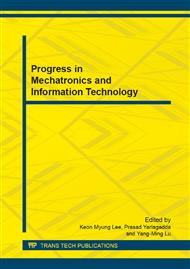p.1123
p.1127
p.1131
p.1136
p.1140
p.1144
p.1152
p.1158
p.1163
Test of the Run-Time Infrastructure Software
Abstract:
The run-time infrastructure (RTI) is a kind of software that is developed by the interface specification of high level architecture (HLA), which can offer a universal and comparatively independent service for simulation applications in the HLA simulation system. The RTI is the key underpinning software for the HLA simulation system. The quality of the RTI software is very important, and it will directly affect the system running. In order to guarantee the quality of the RTI software, it should be tested and evaluated roundly. The test and evaluation involve the functional and the performance aspects. The former can certify the RTI software correctness, and the latter can check the efficiency for the RTI software. Three editions of RTI software will be tested and evaluated in this paper. Both the function and the performance are tested, and the performance aspect is emphasized. The results show that the three editions of RTI software not only can meet software performance requirements, but can be used in generic real time simulation. Moreover, on the aspect of performance, the KD-RTI has some virtues, such as fast data-exchange velocity, low data loss and low latency.
Info:
Periodical:
Pages:
1140-1143
Citation:
Online since:
November 2013
Authors:
Price:
Сopyright:
© 2014 Trans Tech Publications Ltd. All Rights Reserved
Share:
Citation:


